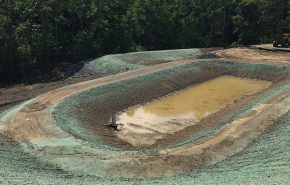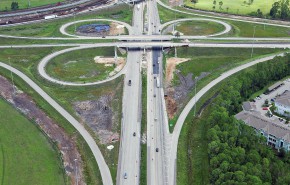Two soil nail walls were constructed at the John E. Amos Landfill, which is located near Winfield, West Virginia. The purpose of the walls was to create area for the construction of landfill facilities and to reduce earth disturbance and excavation volume. GAI Assistant Engineering Manager Ron Harris, PE offers a preview of GAI’s presentation on this project at the World of Coal Ash Conference (WOCA) on May 9, 2017.
The presentation will focus on the purpose of the soil nail walls, existing site conditions, geotechnical investigation, alternate construction methods considered, geotechnical and structural design, construction planning and execution, testing and QA/QC during construction, and lessons learned during construction.
With coal combustion residual disposal at the John E. Amos Landfill currently taking place in the facility’s South Valley, development in the North Valley will allow plant operations to continue after the South Valley reaches disposal capacity. Facilities for the management of leachate, erosion and sedimentation control, site access and clean water diversion are required prior to the disposal activities occurring in the North Valley portion of the landfill.
Purpose of Soil Nail Walls
- Widen valley for new landfill facilities
- Reduce volume of excavation
- Reduce earth disturbance area
- Stabilize steep cut slopes in soil
and weak rock
In lieu of sloped excavations to accommodate these facilities, two soil nail walls were constructed to widen the North Valley. Construction of the soil nail walls on each side of the valley significantly reduced earth disturbances and the volume of excavation required to construct the North Valley facilities. The North Soil Nail Wall is approximately 1,075 feet long with a maximum exposed height of 74 feet and has a surface area of approximately 60,000 square feet. The South Soil Nail Wall is approximately 380 feet long with a maximum exposed height of 41 feet and has a surface area of approximately 12,000 square feet.
Using soil nail walls for widening the valleys at the landfill allowed for reduced excavation volume and increased global stability of the cut slope. GAI provided geotechnical investigation, design and construction oversight on the project.
GAI’s Power Generation Team develops innovative and cost-effective solutions for coal combustion residuals disposal. If attending, please join Mr. Harris for this presentation at WOCA on May 9. Sign up here to obtain a copy of our presentation after the conference.
For more information on soil nail walls, contact GAI Assistant Engineering Manager Ron Harris, PE at 412.399.5141.


